
Coal to Gas: Potential Futures
If a gas plant were built over the bones of the old Canadys coal plant, how would the lives of those in its surroundings change?
Put a CAP On It!
Dispatch from a climate activist on how Climate Action Plans come to be and the County’s new plan.
Charleston Moves
Checking in with the vanguard of Lowcountry transportation action.
The
6
Lowcountry Climate Magazine Issue
editorial staff
Belvin Olasov Co-Editor in Chief
Belvin Olasov is the co-founder and co-director of the Charleston Climate Coalition. His background is in creative writing and believes in bringing vision-making and art to climate work.
Sydney Bollinger Co-Editor in Chief
Sydney Bollinger (she/her) is a writer and editor affiliated with Surge and The Changing Times. She aims to connect communities to climate action through narrative and collaborative storytelling. Find her online @sydboll.
Blake Suárez Designer
Blake Fili Suárez is a graphic designer with a focus on branding and illustration. He is a co-founder of The Marsh Project and he works out of a room that looks out on a little meadow he is planting with his kids.
Hailey Williams Creative Writing Editor
Hailey “Pell” Williams is a Charleston native, poet, and swamp-trekker. You can find her work in The Birmingham Poetry Review and Tupelo Press’s June 2023 30/30, amongst others.
editor’s note
Well, folks, here we are: the Belvin Issue. Yes, most of the bylines are from me. Yes, I’ve provided a loveable comic character to guide you through the issue. No, I didn’t have more important things to be working on — what’s more important to the climate movement than storytelling?
Stopping dirty fossil fuels is core to this work as well. As I write this, H. 5118, a bill that throws total support behind methane gas as the future of SC’s energy, is working its way through the Statehouse. It’s going to take sustained public outcry to keep lawmakers from writing a blank check to Dominion Energy for a massive new gas plant and series of pipelines. I highly recommend you get involved.
You’ll also notice we have a new Surge logo, thanks to our wonderful new designer Blake Suárez! Blake came on late in the process this issue, so you’re seeing seeds of his style that will blossom in future issues. Welcome, Blake!
And a giant thank you to Camela Guevara, our great founding Art Director, for helping bring form to the idea of a Lowcountry Climate Magazine.
Love, Belvin Olasov, Surge Co-editor-in-chief


Mary Edna Fraser is a longtime activist, and her work has been woven into the fabric of Charleston’s environmental movement. She has collaborated with Coastal Conservation League, Charleston Waterkeeper, and the SC Environmental Law Project on many projects. At the first CCC event, the Climate Crisis Moment rally, every speaker was flanked by two of her red-orange marsh batiks – including Fraser herself, who led the crowd in singing protest folk songs.
“Artists have always been the megaphones of bad news,” she said. “Creative people have always said the hard things before the politicians talk about it… You have to knock them upside the head a bit before they’ll address reality.”
See her work @maryednastudio on Instagram or online at maryedna.com
2 Surge: The Lowcountry Climate MagazineMarch 2024
Cover Art by Mary Edna Fraser - “Flaming Sky” Oil on linen
We’re
writers, artists, & activists. bircsbus
getinvolved! FOR MORE INFORMATION, EMAIL surgemagchs@gmail.com sponsor surge
looking for:
e !
www.SurgeCHS.com
Surge Magazine is a production of the
PHOTO BY KAYLIN PACHECO
RABBITDANCE, MIDDLE OF TOWN
Noah Meier

Mouthful of berries and mint leaf, juice setting itself against my chin. All reds and blues and my insides roar. I don’t remember how old I was but when seeking inside the memories there is a smallness, a perfect vignette. A dad’s hand missing two fingertips and kids without names only smiles and soft arms holding up a family dish. But when it came time to celebrate, to give way to ceremonial eating and festivity I was found swimming in the lilypads. I undressed myself as an adult would, I mimicked wading in. Was there any glory in the soft leaves, any joy to be had? I nod off.

The Coyotes of Sullivans Island
Jason Chambers
It was six of them that broke off from the pack the night their last den was crushed and buried under the rumble of heavy equipment and while the chainsaws roared they repeated a ritual performed over centuries and fled to the rising sun and came through the marsh to face wide water and the hope of trees beyond. And like a man ten flights up in a burning building they jumped, and swam the intracoastal while the wind whipped whitecaps over their desperate snouts and their paws treaded sidewise to current that quickened with every second. Three was drowned but three remained and they come up dripping salt from their fur, half-starved, and tired. Today they are three dozen and they slip the dunes at dusk and having encountered this ancient mystery incarnate and alive on four feet the town from its air conditioning has decided they should be trapped in cages and shot through the bars. They look to the east at rainbows over the great sea and they’d run if they could but there is nowhere left to go. The godfearing say it works to pray and the heathen say it don’t but in the sad song the coyotes lift to the moon there is a third way to god and I sing now with them, or not at all.



BY BELVIN OLASOV 7 13 SurgeCHS.com
Coal to Gas: Potential Futures
WRITTEN BY BEN SCHOOLS
What once was a coal-fired power plant sits vacant in the community of Canadys, near Walterboro, South Carolina. Retired in 2013, the plant overlooks the Edisto River, the longest free-flowing blackwater river in America. A diverse population of fish, from tiny bluegill to large catfish, swim in its flow and attract visitors along the banks. Directly adjacent to the old power plant is Colleton State Park, a campsite and outdoor haven. One can peer through the trees and see the steel towers and gridded powerlines.
In partnership with Santee Cooper, Dominion Energy has announced plans to transform this former coal-burning plant into a natural gas plant.
Picture smokestacks and a rise in air pollutants—like methane, a titan greenhouse gas. Consider increased levels of mercury found in the Edisto River. Imagine an ominous and potentially dangerous gas pipeline laid across miles of forest, cutting through privately owned land, and the new access roads required to build such an extensive infrastructure.
A significant financial investment, the gas plant might easily surpass thirty years in operation. What might this future look like?
A vision ten years after completion, in 2041:
Bill and his family used to live on a piece of land in Ridgeville that his family had owned for decades. Their ten-acre plot was home to longleaf pine and a couple corn fields. They kept a large chicken coop next to their house and brought fresh eggs to neighbors. But that’s all gone now. When the gas rep came by and
offered to buy a three-acre strip of land which cut through Bill’s property he emphatically said, “No. We’re not selling.” He didn’t realize the little choice they really had.
The gas rep proved persistent, and soon filed a condemnation notice, which told Bill’s family that the gas company had the right to purchase the land as it was necessary for the public good—a process known as eminent domain. But to Bill, it didn’t seem good at all. He challenged the right to condemn and hired a lawyer. Several months went by as the family waited for their case to be heard. Their land was appraised at a value they couldn’t accept. This was the family’s land, enjoyed for generations. The gas company could not understand the true value they placed upon it.
Millions of dollars backed the pipeline project, and the gas company claimed they offered a fair price. Bill’s lawyer was able to win them more compensation, but the whole process cast a shadow over this land Bill had assumed was untouchable. They owned it, didn’t they? Bill couldn’t justify to his daughter and son that their home would have a volatile gas
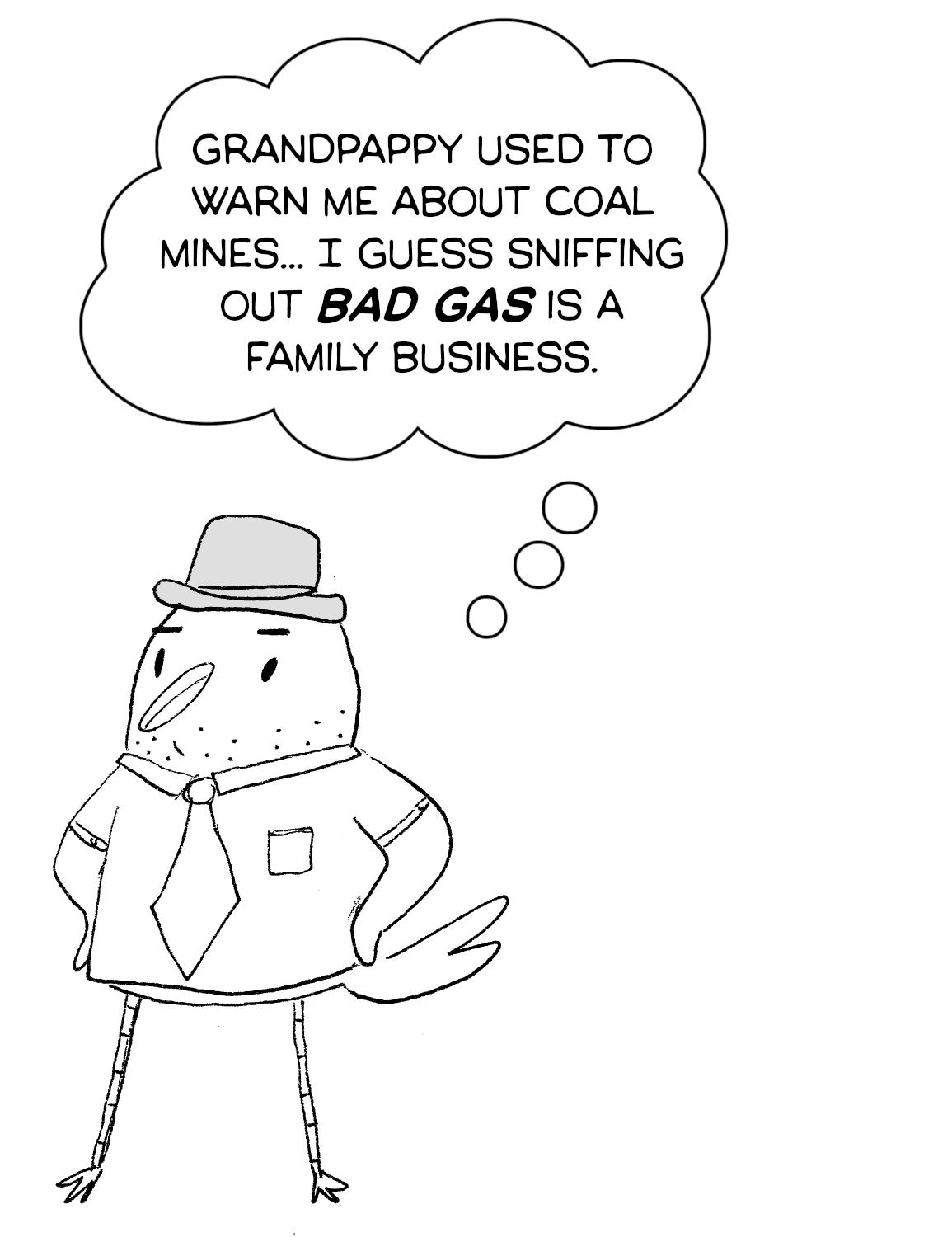
pipeline running through the middle. It would be too dangerous. It would change everything. In the end, the change came anyway. Through eminent domain, the gas company forced Bill to sell. The project moved ahead and placed the pipeline across his corn field. They cut down old pine trees on either side to make room for the pipeline and heavy machinery. Rain came, turned the flattened ground to mud, and ruined the land.
After long discussions with his wife, Bill and his family decided to move. Though the entire process took a year, they felt they lost everything in the blink of an eye. They left their home and relocated further away to Orangeburg. They haven’t gone back to the old house since.
A web of gas pipelines spreads across the Lowcountry, and even spans the ACE Basin, circumventing protected lands. Near an upstream section of the Ashepoo River, there are reports of a leak. Gas spills into marshland and is washed into the river. Crews come to fix the leak and reinforce the infrastructure, but it’s too late. Dozens of fish and counting are found dead, floating inside tidal creeks. Fishermen are hesitant to catch food for fear of
4 Surge: The Lowcountry Climate MagazineMarch 2024
poisoning themselves and their families. And the wetland ecosystem shows signs of serious damage.
The marsh there is quieter. The native birds have moved elsewhere for food, and some that did eat from contaminated sources are found dead around their habitats. Routes of migratory birds have already detoured to other areas of the ACE Basin after the marshland was disrupted during pipeline construction. Now that the gas has leaked into the soil and river, a much larger swath of vegetation becomes choked, spartina grass browned and thinning.
Downstream, our filter feeders, our oysters and clams, are no longer suitable for eating. The water contamination is too high. Their populations diminish and it becomes a difficult cycle to stop.
The Edisto Natchez-Kusso tribe has lived along the banks of the Edisto River for hundreds of years. They take pride in their heritage, and an appreciation for their natural landscapes is cultivated in young generations today. The tribe and all people in the surrounding area feel the effects of the Canadys gas plant. A decade after building the pipelines, the land around them still bears the mark of construction. Access roads cut through field and forest and have reduced wide strips to infertile dirt. Long-leaf pine trees which once sheltered red-cockaded woodpeckers in their boughs are now empty. The birds traveled away from the fumes, deeper into untouched lands.
An Edisto Natchez-Kusso family, used to fishing near Givhans Ferry State Park, now worries about the water quality in the river. They can smell the emissions from the gas plant which is directly next to the river upstream. There aren’t as many fish these days, and the ones they catch, the family tosses back, unsure if they’re safe to eat. Are there high levels of heavy metals in the water? Many people speculated about the dangers of the gas plant, but the project moved ahead anyway. No one had asked the Edisto Natchez-Kusso their opinion about the new construction. And this family, like many others, felt unheard.
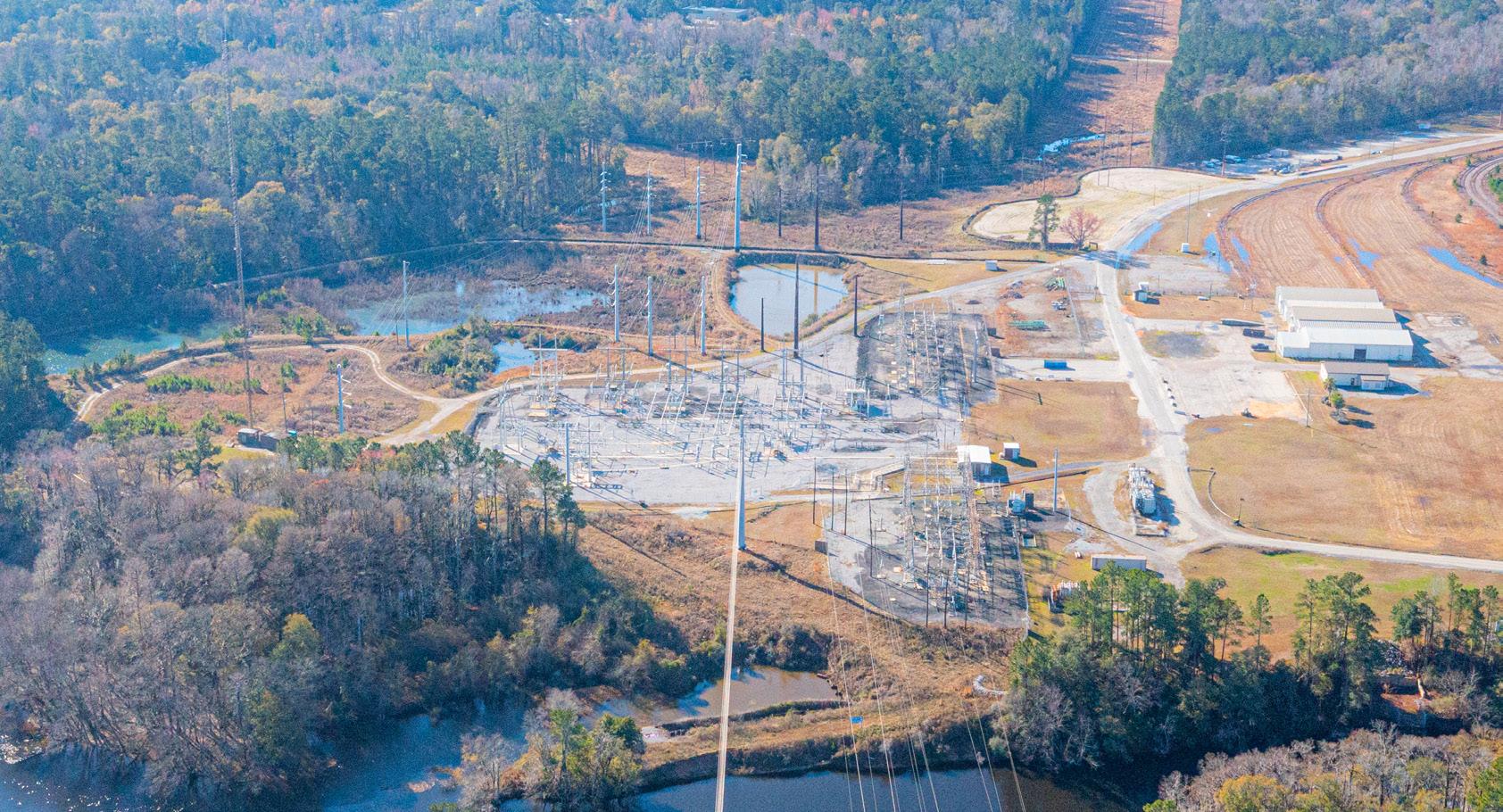
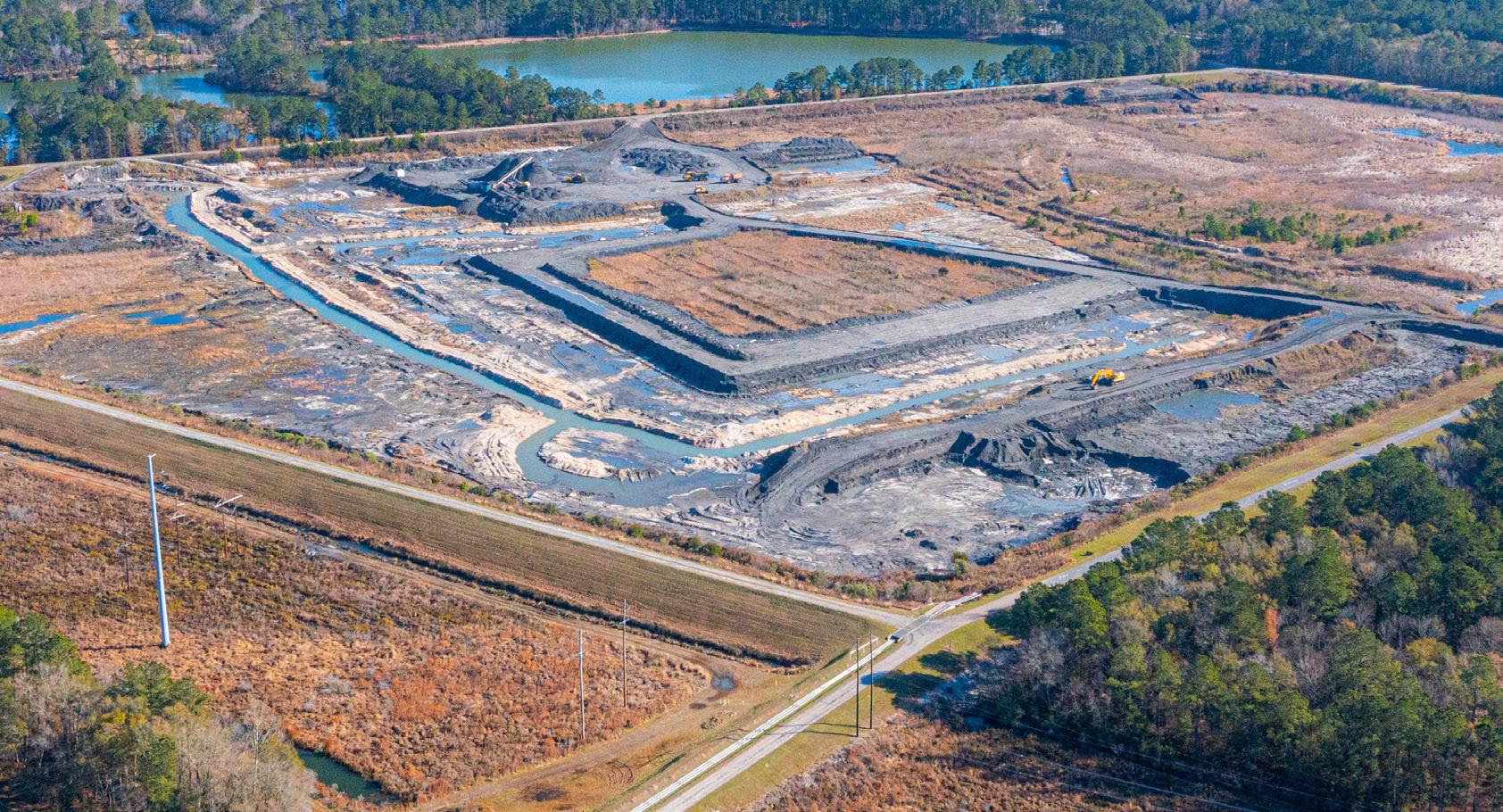

5 SurgeCHS.com
ABOVE: PHOTOS OF THE DEFUNCT CANADYS COAL PLANT












6 Surge: The Lowcountry Climate MagazineMarch 2024 SOS CARE’S 4TH ANNUAL VILLAGE VISION 5K FUN RUN & WALK When: March 9, 2024 9:00-12:00 Registration begins at 8:15 Where: Palmetto Islands County Park Sweet gum and Big Oak Shelters 444 Needlerush Pkwy, Mt Pleasant Why: To provide an affordable and enriched housing community to individuals with autism and intellectual disabilities http://bit.ly/2024VillageVisionRun Help keep the City Paper free No paywall. Free print edition. PALMETTO ISLANDS COUNTY PARK MARCH 10 PALMETTO PARK JAM with The Reckoning Purchase tickets today!

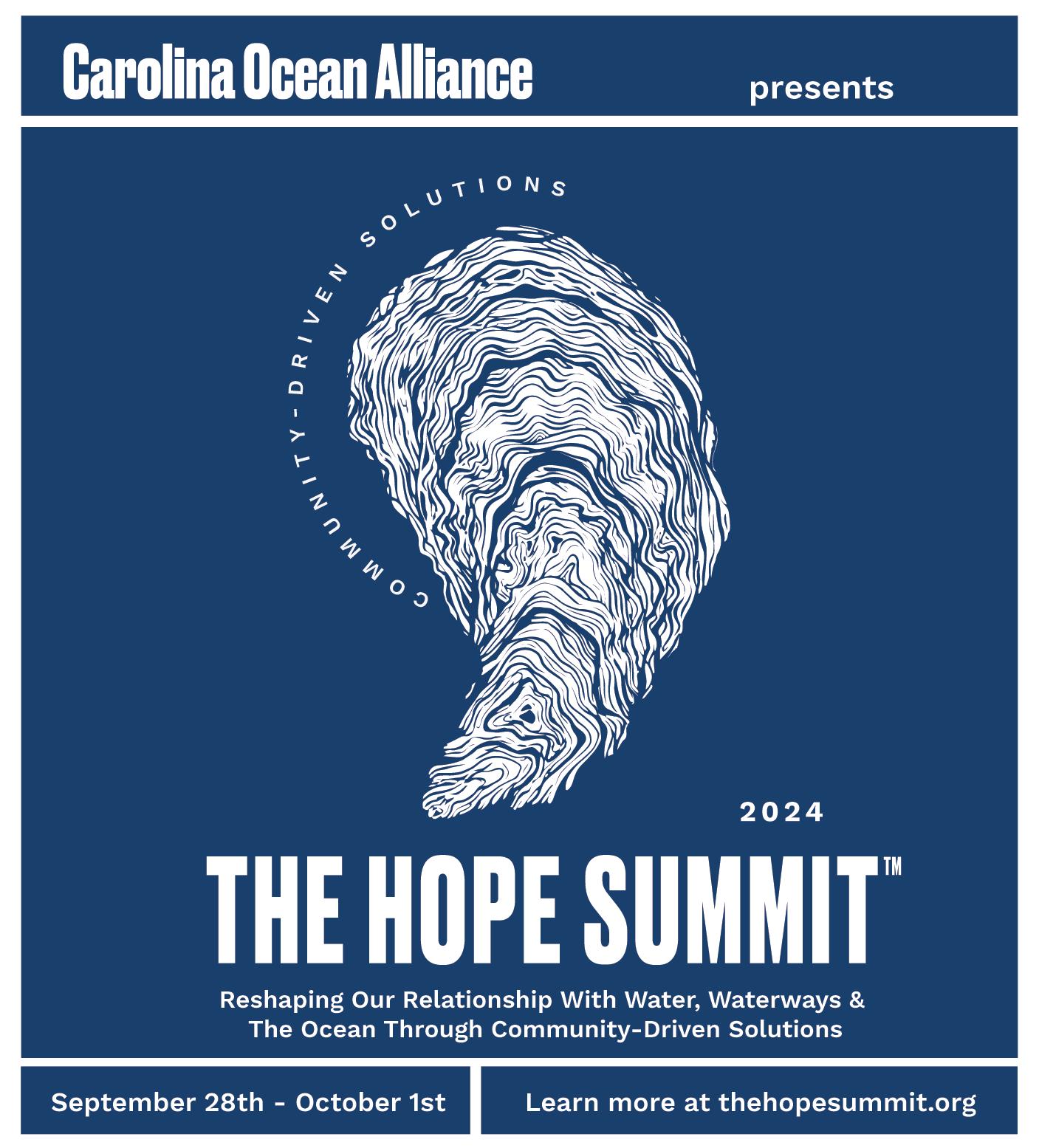
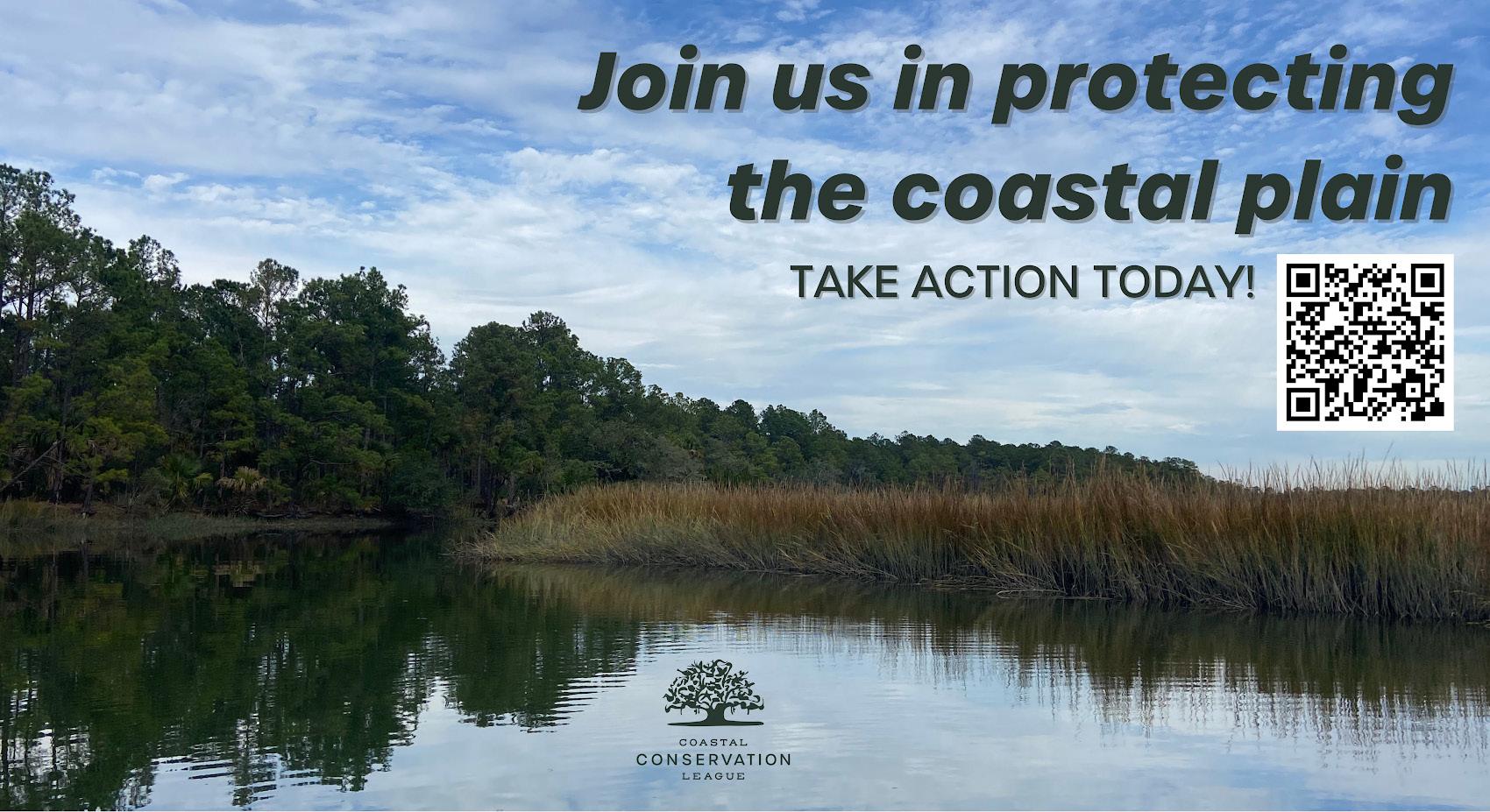
7 SurgeCHS.com

8 Surge: The Lowcountry Climate MagazineMarch 2024
When the Dominion and Santee CooperCanadys gas plant was first being proposed, a number of intervenors, including the Southern Environmental Law Center representing the Coastal Conservation League and the Southern Alliance for Clean Energy, raised the alarm – the projected costs of the plant were inaccurately low, the pipeline plans were undisclosed, and cheaper, cleaner, and more reliable green energy solutions such as solar and batteries were left on the table.
Now environmental groups are bringing their arguments to the SC legislature, who need to approve the project through legislation before it can proceed. Conservation Voters of South Carolina’s Energy Director John Brooker sees the Canadys gas plant as a multidimensional risk – dubious from an economic, environmental, and justice perspective and an investment that could backfire for decades.
“The proposed plant isn’t something you just invest in and then it’s gone a couple years later. This is a 40-year investment here. These plants are expensive, they’re kept around. We have got coal plants in South Carolina that were built in the ‘70s,” Brooker said.
“This is something that we’re not just going to have to live with, but even our children will have to live with.”
An independent report commissioned by state regulators questioned the necessity of this proposed large natural gas project, emphasizing that Santee Cooper’s proposal did not explore cheaper and cleaner alternatives. Natural gas has to be imported from out-of-state, and its prices are subject to market volatility, recently spiking due to the war in Ukraine. Part of the root of price concerns is that Dominion Energy gets a guaranteed return on investment for new energy infrastructure, and any costs can be passed
“It’s no secret that polluting infrastructure has historically been located in systematically oppressed communities, Black and Brown communities, low-income communities.”
on to ratepayers’ power bills, so they’re incentivized to maximize new infrastructure without regard for future fuel costs.
“A lot of these customers, especially Dominion customers, have seen price spikes in their bills recently from the cost of natural gas. The utilities don’t cover any of the cost of fuel. They pass that a hundred percent on to customers. They don’t care if, for a metaphor, you’re buying a Mazda Miata or a Hummer. They don’t care how much fuel it takes, we pay for the fuel,” Brooker said.
While legislators have stated that part of why they’re interested in gas is SC’s need for power, the plant won’t be up and running until 2031. Coal plants are coming offline, the population is growing fast, and we’ve had $11 billion worth of new manufacturing investment. But gas plants aren’t a speedy remedy.
“This plant doesn’t really solve urgent energy needs. If we have a large manufacturing customer that wants to come to South Carolina in 2028, 2029, 2030, we might not have energy for them,” Brooker said.
Many of these large companies also have clean energy targets, and are looking at what’s on the grid when they move to a new state.
Economic concerns aside, the environmental impacts of the Canadys plant could
be huge. It would emit large amounts of methane, a potent greenhouse gas with immediate warming potential 70x larger than CO2. It’s hard to calculate just how much due to untracked leaks from pipelines, but some recent estimates have gas at similar levels of climate pollution as coal. The plant would have a big impact on its immediate environment, emitting air pollutants as well as contaminants into the Edisto River.
And this would all take place in Canadys, SC, which has a 38% Black population, 50% higher than the state average, and that has already been polluted with a coal plant that spread asthma and heart issues.
“It’s no secret that polluting infrastructure has historically been located in systematically oppressed communities, Black and Brown communities, low-income communities,” Brooker said. “This is a former coal site. This is a community that’s already suffered decades of coal pollution. What you’re doing is you’re just saying, ‘y’all have borne the brunt of fossil fuels for however long that coal plant was open and we’re gonna add another 40 years on top of that.’”

9 SurgeCHS.com
WRITTEN BY BELVIN OLASOV
Put a CAP On It!
Dispatch From a climate activist
WRITTEN BY BELVIN OLASOV
Climate Action Plans are not a magic spell that, once passed, will transform the entire governmental apparatus into a climate progress juggernaut. (This is despite my attempts at druidic rituals and positive thinking.) CAPs are, however, a crucial step forward, the foundation of a house. Without a CAP, you have no chance at robust, comprehensive climate action – with one, you have a goal and a roadmap.
We’re in a special time for Climate Action Plans right now, as both Charleston County and South Carolina as a whole have CAPs about to pop out the oven. Charleston County’s draft plan will be available to view online starting March 7th and should go up for a vote in early April, while SC’s draft plan can be viewed now. There’s never been a better time to Know Your CAP!
How Are CAPs Made?
Climate experts get in a room together and form a comprehensive picture of what leading on climate change would entail, from green building incentives to composting programs to walk, bike, and bus infrastructure. The plan is then put before a council with varying levels of climate science knowledge and orneriness. To be politically palatable, the plan makes clear that each of its items is a recommendation, which we can all agree is a stronger word than a suggestion, a proposal, or a humble request.
SC’s CAP is a special case where it’s all just apportioning federal funding, so no further legislative approval is needed.
We Have a CAP – What Now?
Once passed, the responsibility of implementing a local CAP is largely vested in the Sustainability Director. This is one of
the most powerful outcomes of the CAP –there is now someone in the government whose job is to advance climate action.
Look to the City of Charleston, which passed their Climate Action Plan in 2021. Since then, we’ve seen a compost dropoff program, more buildings built with the Charleston RISES green building program, electric vehicle charging station requirements, and more. And that’s all while the Sustainability Department is still one person, Director Katie McKain. Imagine what we’d accomplish with more staff and more championing from our public officials – when things like a King St. bike lane are discussed at City Council, no councilmember mentions the climate impacts or the City’s CAP calling for bike lanes.
What helps keep CAPs from being so many pretty words on paper is their accountability mechanisms and metrics. They set goals – the City of Charleston for 56% emission reduction from 2018 levels by 2030 and net zero by 2050. They have greenhouse gas audits to see how much climate pollution reduction has been achieved. They track the progress of each of the action items (51 in the City’s case).
If one were serious about taking action on climate locally, this is how you’d do it. The climate crisis calls for transformative action, and so CAPs call for transformative action, despite the tendency for local governments to move at an incremental pace.
Enter Charleston County
Charleston County passed a climate action resolution in 2021 that “encourages the development and implementation of an equity-centered, community-based, integrated climate action plan; and commits to work closely with municipal governments within Charleston County on their plans to address climate mitiga-
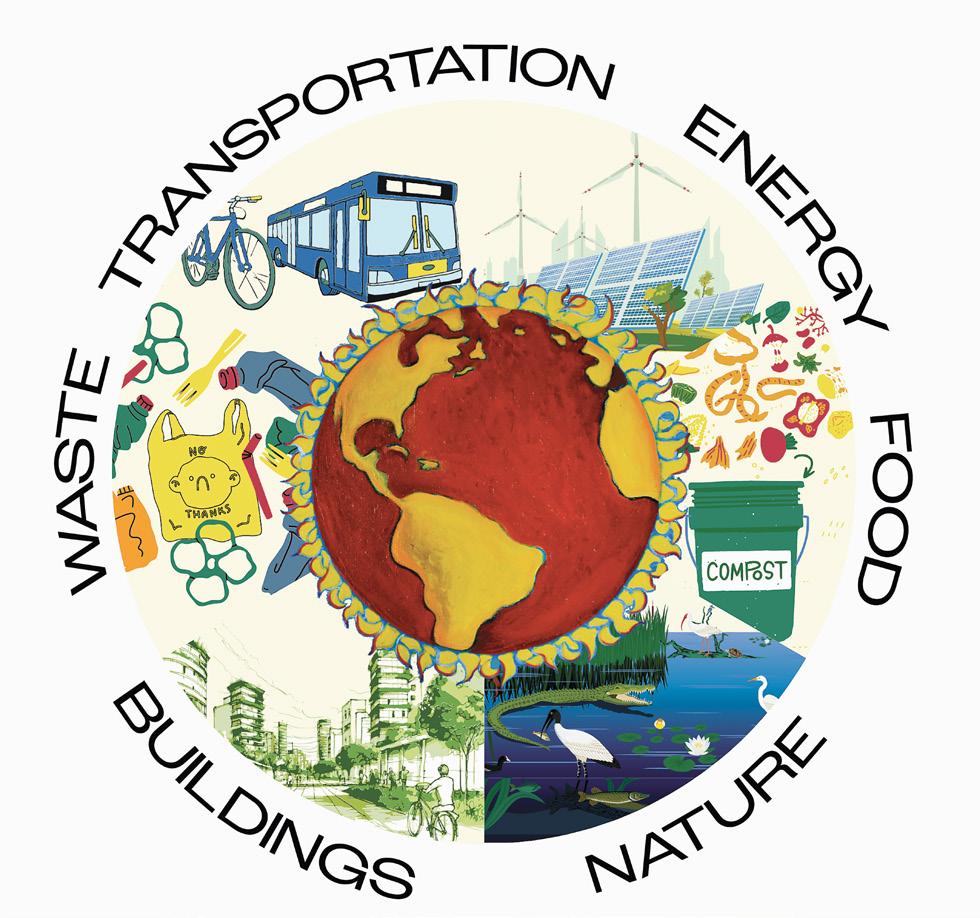
tion.” (Not to brag, but the Charleston Climate Coalition led the charge on pushing and passing the resolution.)
Now, the County is finally developing that plan. County Council opted to have consultants from the Canadian Sustainability Solutions Group take the lead on their CAP planning. CAPs are Sustainability Solutions Group’s bread and butter, with dozens of previous projects in American cities like Burlington, VT and Tacoma, WA, as well as every Canadian city you’d recognize by name.
Sustainability Solutions Group has identified the “Big Moves” of the plan as:
1. Affordable, resilient buildings
2. Sustainable and inclusive transportation
3. Clean energy generation
4. Innovative industrial and agricultural sector
5. Optimized waste and water stewardship
Each action item has been calculated for emission reductions over time and for economic impact, both in terms of initial cost and ultimate savings. The County has a lot of power, and this CAP could end up being deeply consequential for local climate action.
The question, as always, is will it get passed and will it get funded? If you push hard for it when it comes up for a vote, you, dear reader, will be part of the answer.
10 Surge: The Lowcountry Climate MagazineMarch 2024
WRITTEN BY BELVIN OLASOV
Charleston Moves




DID
Some revolutions span decades. There’s no one flashpoint, no big win that changed everything – just the accumulation of effort shaping a new reality, like water and time channeling through stone.
To be able to safely walk and bike across the Lowcountry would certainly qualify as a revolution. South Carolina ranks as the second most dangerous state for cyclists, and Charleston plus North Charleston make up the fifth most dangerous area for pedestrians in the nation. To rectify decades of car-centric decisionmaking will involve intervening at every road project decision point, crafting new policies and infrastructure to make existing roads accessible, and activating a movement of locals advocating for a multimodal transportation future.
Enter Charleston Moves.
“I’m confident. It might be when I’m 70 and really crotchety, but all of this stuff is going to be in place. It’s just a matter of when, right? So all of the pushback, all of these difficult processes, all of the naysayers, whatever. They’re wasting time for the inevitable, that I can guarantee you. We are going to be a more bike-centric, pedestrian-centric downtown,” said Charleston Moves Executive Director Katie Zimmerman.
Zimmerman stopped driving 17 years ago, simply because she hated it. She had become keyed in to the necessity of car alternatives to mitigate the climate crisis, and so when the opportunity arose to join Charleston Moves, she came onboard. Along with Savannah Brennan, Director of Programming since 2015, they make up the organizer duo watchdogging and shepherding for the Charleston area’s complicated web of transportation projects.
They push forward plans like Rethink Folly Road (building towards a bike path along the length of Folly Rd.), and they advocate for big infrastructure changes like the successfully funded Ashley River Bike & Pedestrian Bridge and now the Better North Bridge project. They work with departments at every level, from the SCDOT to the local governments. They refer back to their map of bike interconnectivity across the area, and whether it’s West Ashley or Mt. Pleasant, they have a vision for how to connect every piece of the puzzle.
“Things take so long. So I think folks generally assume nothing is happening,” Zimmerman said. “The people who are sort of die-hards, really paying attention to stuff, engaged on this stuff – I think they’re still surprised by certain projects. Like they just don’t realize how many things are actually in the works. I think a lot of people don’t know that.”
The current bureaucratic landscape is much improved from the past. Previous City of Charleston planners called bike lanes a “tattoo on the face of the city.” Now, Charleston County doesn’t consider a transportation project without all the modes in it. Bike lane debates rage on, but the Charleston Moves organizers and the movement they lead remain locked in to their vision of a new transportation status quo.
“I wouldn’t be shocked to see [that] the majority of the peninsula, within the next 20 or 30 years, is car free,” Zimmerman said. “I just don’t see how we avoid that future.”
11 SurgeCHS.com
CLIMATE ORG PROFILE:
KNOW? Transportation
33% of all US greenhouse gas emissions.
YOU
accounts for
PHOTOS BY CAROLINE FRADY
A clue!
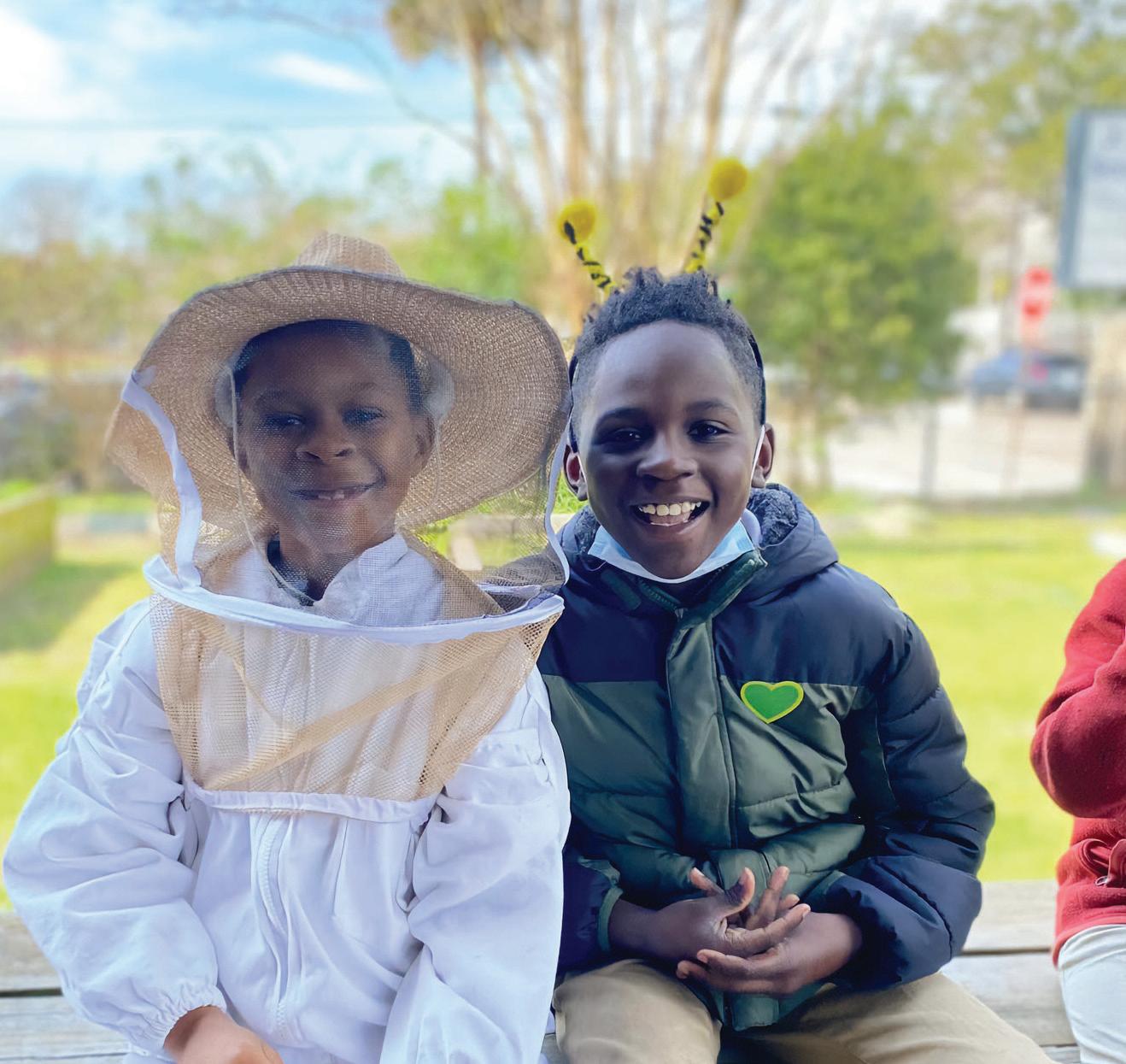

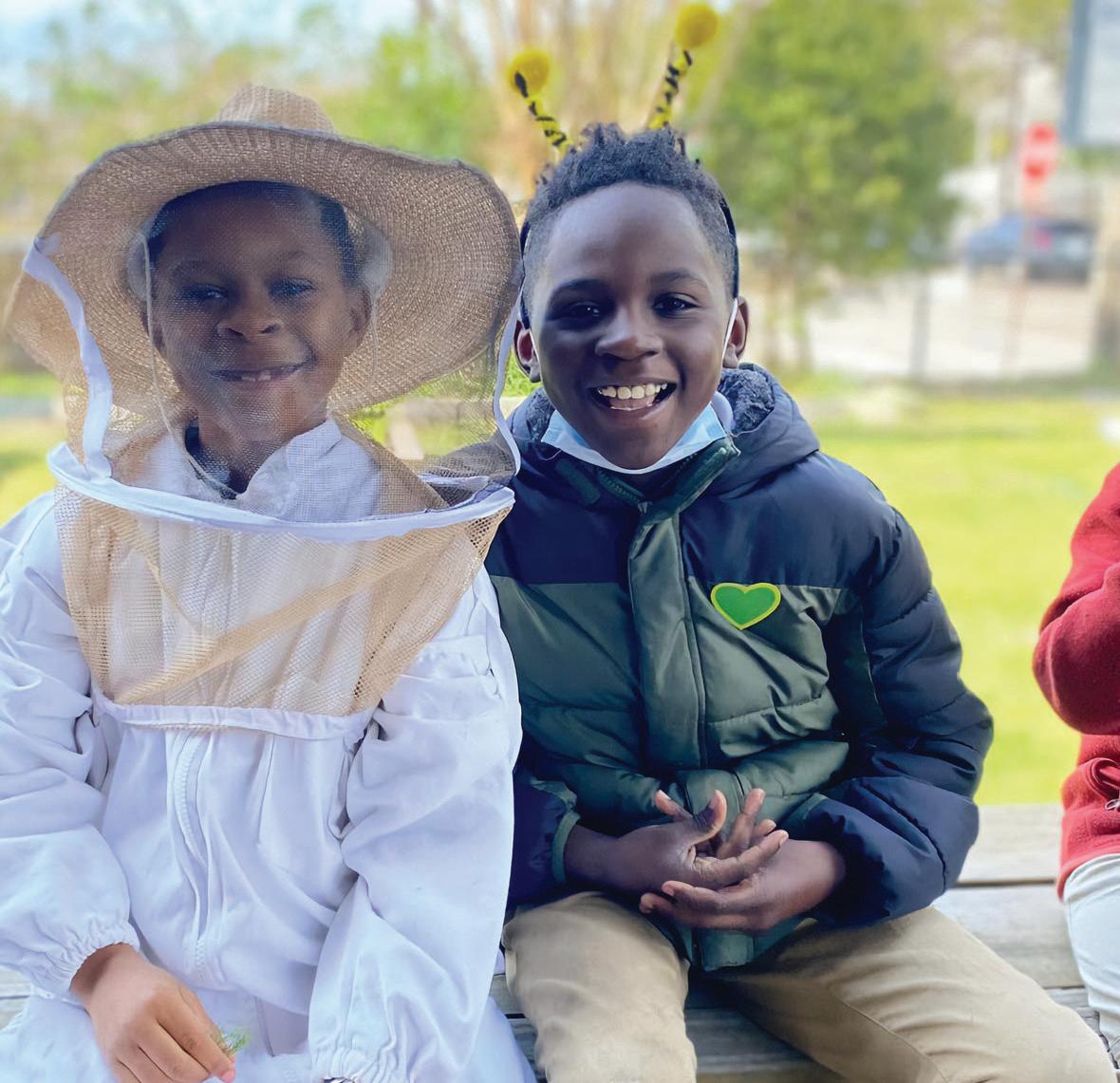











12 Surge: The Lowcountry Climate MagazineMarch 2024 21 Magnolia Road| CharlestonClassicConsignments.com Sustainable retail therapy for mindful women Sat., April 13 | 10a.m. - 2 p.m. | Magnolia Park 720 Magnolia Road CHARLESTON HONEY AND BEEKEEPING EXPO Local honey for purchase Guest speakers Local handmade crafts Children’s activities FREE ADMISSION | CharlestonBees.org Presented by the Charleston Parks Conservancy and Charleston Area Beekeepers Association
 PHOTO BY KAYLIN PACHECO
PHOTO BY KAYLIN PACHECO
RABBITDANCE, MIDDLE OF TOWN
Noah Meier
Mouthful of berries and mint leaf, juice setting itself against my chin. All reds and blues and my insides roar. I don’t remember how old I was but when seeking inside the memories there is a smallness, a perfect vignette. A dad’s hand missing two fingertips and kids without names only smiles and soft arms holding up a family dish. But when it came time to celebrate, to give way to ceremonial eating and festivity I was found swimming in the lilypads. I undressed myself as an adult would, I mimicked wading in. Was there any glory in the soft leaves, any joy to be had? I nod off.

The Coyotes of Sullivans Island
Jason Chambers
It was six of them that broke off from the pack the night their last den was crushed and buried under the rumble of heavy equipment and while the chainsaws roared they repeated a ritual performed over centuries and fled to the rising sun and came through the marsh to face wide water and the hope of trees beyond. And like a man ten flights up in a burning building they jumped, and swam the intracoastal while the wind whipped whitecaps over their desperate snouts and their paws treaded sidewise to current that quickened with every second. Three was drowned but three remained and they come up dripping salt from their fur, half-starved, and tired. Today they are three dozen and they slip the dunes at dusk and having encountered this ancient mystery incarnate and alive on four feet the town from its air conditioning has decided they should be trapped in cages and shot through the bars. They look to the east at rainbows over the great sea and they’d run if they could but there is nowhere left to go. The godfearing say it works to pray and the heathen say it don’t but in the sad song the coyotes lift to the moon there is a third way to god and I sing now with them, or not at all.



13 SurgeCHS.com




OYSTERS ON THE POINT WITH FOLLY PIRATES OVER 40
Saturday, Mar. 2 from 2 p.m. - 6 p.m. at Charleston Harbor Resort and Marina
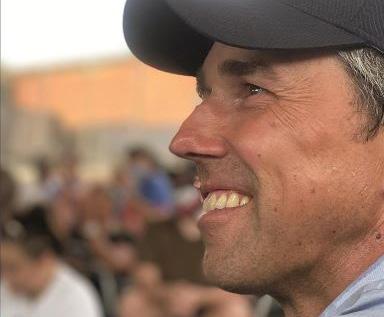
WIL X PDP X BLS OYSTER ROAST
Thursday, Mar. 14 from 6 p.m. - 9 p.m. at Frontier Lounge

ST. PATTY’S ON THE PORCH WITH THE YACHT CLUB
Saturday, Mar 16 at 5:30 p.m. at Firefly Distillery

FINDING PEACE BROUGHT TO YOU BY RADICAL EXHALE
Sun, Mar 24 from 2 p.m. - 4 p.m. at Pluff Mud Mercantile
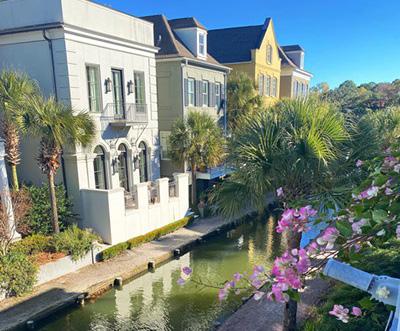
BETO O’ROURKE: WE’VE GOT TO TRY Saturday, Mar. 2 at 4 p.m. at Blue Bicycle Books
THE LOWCOUNTRY HIGHROLLERS VS HARD KNOX ROLLER DERBY
Saturday, Mar. 16 at 4:30 p.m. at North Charleston Convention Center
PALOMINO BLOND
Wednesday, Mar. 20 at 8 p.m. at Tin Roof 21+
ART IN I’ON Saturday, Apr. 13 from 3 p.m. - 6 p.m. at I’on Neighborhood
Surge: The Lowcountry Climate MagazineMarch 2024 14 HOSTING AN EVENT? For more information on using City Paper Tickets for your next event contact us at sales@charlestoncitypaper.com
GREAT
LOCAL · LOW FEES ·
EVENTSCITYPAPERTICKETS.COM

15 SurgeCHS.com


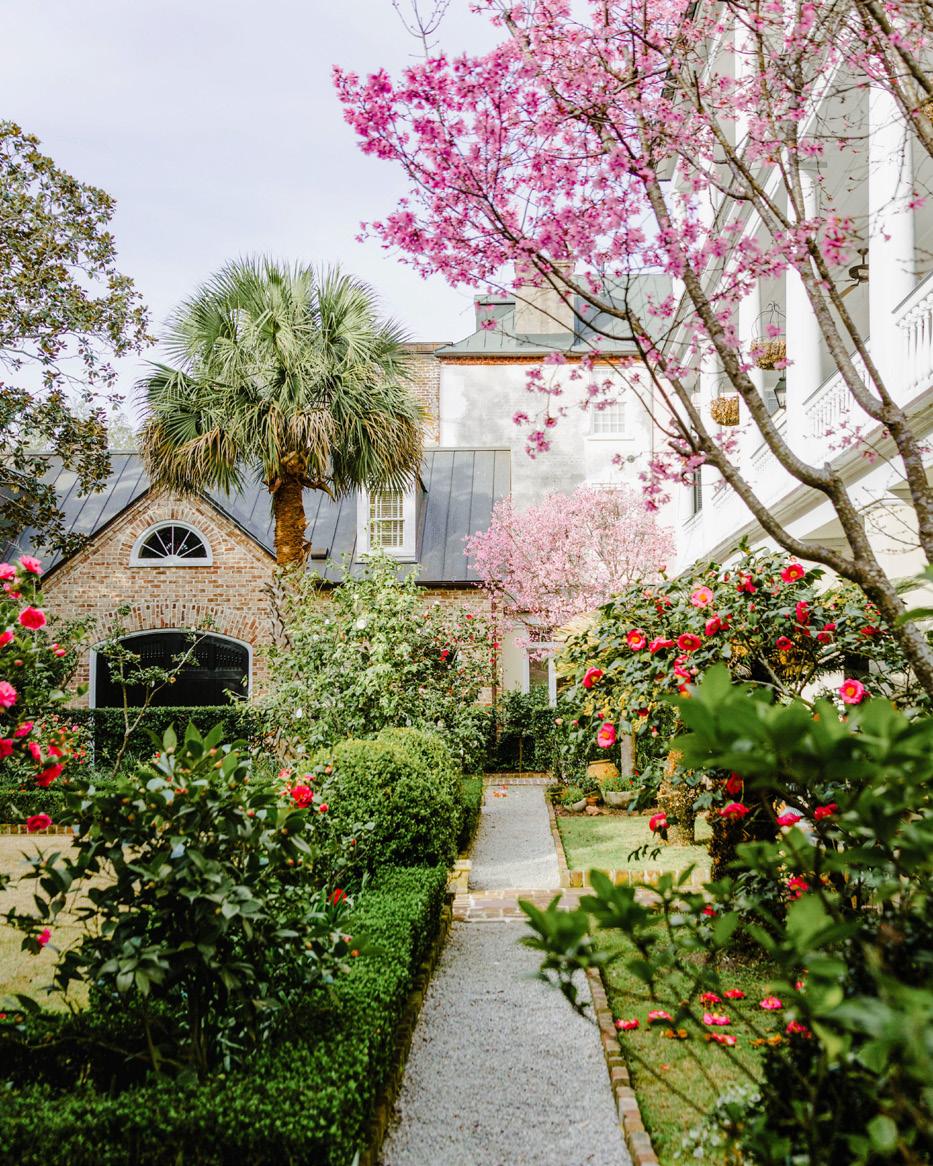

CHARLESTON FOUNDATION FUNDRAISER

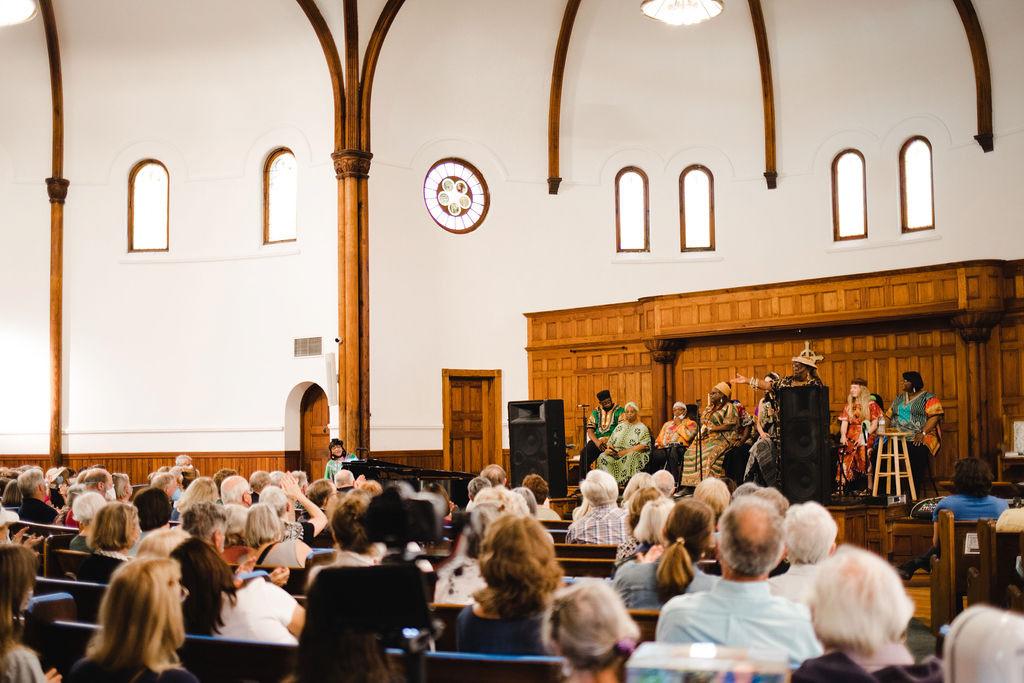
Formerly known as the Festival of Houses & Gardens...

For 77 years, Historic Charleston Foundation has celebrated houses, history, and culture through its annual spring festival. This year, become an insider with tours of some of the most beautiful private homes and gardens in Charleston, SC and discover the intersection of preservation and design through exciting lectures, workshops, concerts and social events at a selection of Charleston's most historic places.


MARCH 14 - APRIL 14, 2024 | A HISTORIC
TheCharlestonFestivalSC.org
BY NATIONALMEDIASPONSOR:
PRESENTED














































 PHOTO BY KAYLIN PACHECO
PHOTO BY KAYLIN PACHECO

















